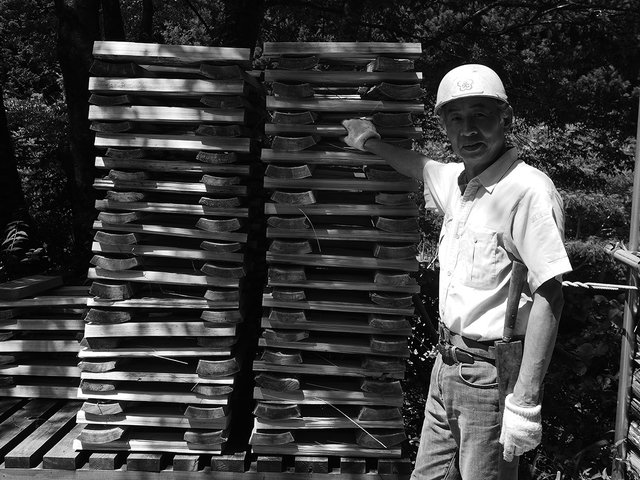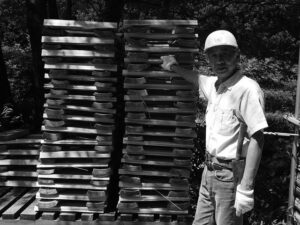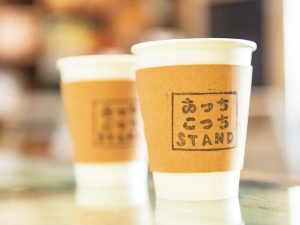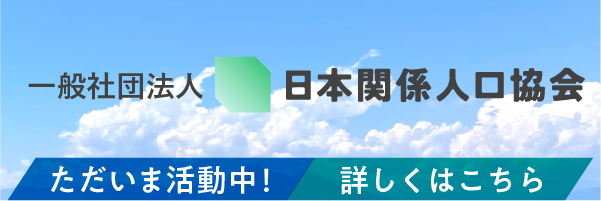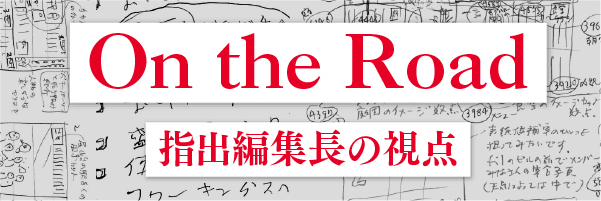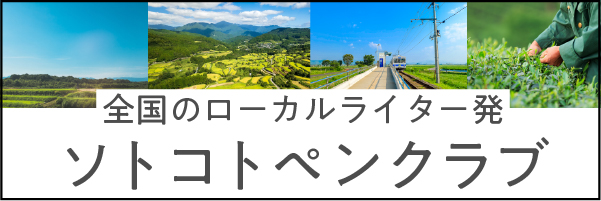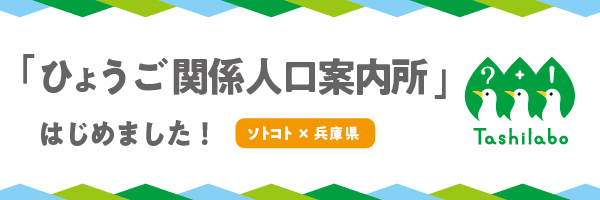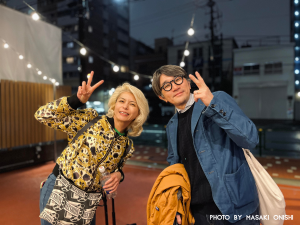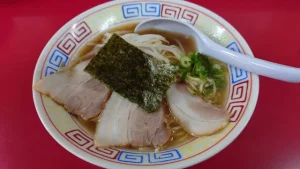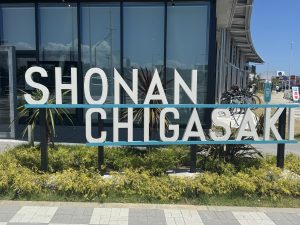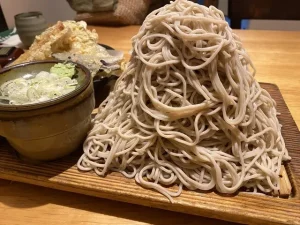奈良県・川上村には平地がほとんどなくて、田んぼや農園をつくるのが難しい。この環境に順応した人々は急な山で木を育てる「林業」を生業にしている。それしかないから。春増薫さん(68歳)は15代目の山守として何十年もかけてこの山々で吉野杉や檜を育てている。林業をする人にとっては、「晴れた日には山に行く、雨や雪の日には行かない」という生活が普通だが、春増さんは天候にかかわらず働いてきた。晴れた日に森に行き、吉野杉や檜を伐り、丸太を山から下す。雨の日に吉野杉の丸太で酒樽の材料になる「樽丸」を作る。
春増さんは直径70センチメートルほどの丸太を大割機に載せて、面を7つの三角に割った。その1個を持ち上げて、説明してくれた。「年輪は冬目(冬に生長した細胞の細かい部分)と夏目(夏に生長した細胞の大きい部分)が交互に重なってできている。水は夏目には通るけど、冬目には通らない。だから、樽から酒や醤油が漏れない」。細かく詰まっていて、均一な年輪をもっている吉野杉は、酒樽材料に相応しい。
春増さんは小割包丁を年輪に合わせて、木槌で三角に打ち込んだ。丸太の中心を意味する赤身と周辺の白太を合わせた「源平」(源氏と平家の旗の色に由来する)を狙い、三角に割った。こうしてできる源平と赤身の部分で酒樽の材料である「樽丸」をつくり、残った白太は割り箸の材料、節のある赤身の芯の部分は焚き木として燃料になる。樽丸の材料を削ったら厚みを揃えて、樽職人の使いやすい形にする。数か月間乾かしたら、何十枚かを束ねて、樽職人に送る。
僕は春増さんに会うたびに、何かのお話を楽しみにしている。「最近調査して分かったらしいが、吉野杉の源平材には抗菌作用があるらしい」と春増さんは話す。「江戸時代には、灘から江戸まで1年で約120万の樽が運ばれたんやけど、お酒は塩が入っていないから、傷みやすかった。江戸までお酒を運ぶのに時間がかかって、お酒が傷んでまずくなったら、話にならない。この間、神戸の樽職人から、『その樽は全部吉野杉の源平材でできていた』と聞いて驚いた。要するに、抗菌作用のおかげで、江戸まで運ばれても酒が悪くならなかったということ。昔の人は科学的には知らなかったやろうけど、『この部分で作ったらお酒が美味しいよ』と知っていたんやな。しかも、その抗菌作用はどこの産地の木材にでもあるのではなくて、吉野杉の源平にしかないことが最近分かった」。
吉野林業の歴史はこの山々の歴史でもある。屋根の下でも外でも、春増さんは言葉と手と心でそのストーリーを語り続けている。
Vol.3 Genpei Story
There is hardly any flat land in Kawakami Village, so it is difficult to start things like rice paddies or farms. People who adapted to this environment have long made their living by growing trees on these steep mountains, or “forestry”, because that is all there is. As a 15th generation yamamori, Kaoru Harumashi (68) has spent decades growing Yoshino cedar and cypress in these mountains. For people in forestry, a lifestyle of “going to the forest on clear days, not going on rainy or snowy days” is normal. However, Mr. Harumashi has worked regardless of the weather. On clear days, he goes into the forest to chop Yoshino cedar and cypress trees, and carry them off the mountain. On rainy days, he turns logs of Yoshino cedar into “staves” for saké barrels.
Mr. Harumashi loads a 70 cm log onto the owariki, or big cutter, and splits the face into seven triangles. He took one of the triangles and explained, “The year rings alternate over and over as winter rings (composed of smaller cells grown in winter) and summer rings (composed of larger cells grown in summer). Water can pass through the summer rings, but not the winter rings. Therefore, the saké and soy sauce don’t leak.” The fine, compacted, uniform year rings of Yoshino cedar are perfect for saké barrel material.
Mr. Harumashi aligned the kowari-bocho with the year rings and pounded it into the triangle with his wooden hammer. He split the triangle while aiming for the “genpei”, a combination of the inner red wood and the outer white wood, named after the colors of the Genji and Heike flags. The genpei and red material are used to make the barrel staves, while the remaining white wood is used for chopsticks, and any red wood with knots is used as fuel for fires. Mr. Harumashi splits and shaves the stave material until it is the right shape and easiest for barrel craftsmen to use. After drying the barrel staves for a few months, he binds them in dozens and sends them to a barrel craftsman.
Every time I meet Mr. Harumashi, I always look forward to one his stories. “I heard about some recent research where they found that the genpei material of Yoshino cedar has an anti-bacterial effect,” he explained. “In the Edo Period, every year 1.2 million barrels of saké were carried from Nada (Kobe) to Edo (Tokyo), but since there’s no salt in saké, it can rot very easily. It takes a while to carry the saké to Edo, and if it goes bad, it’s worthless. The last time I was in Kobe, I was surprised when a barrel craftsman told me, ‘Those 1.2 million barrels were all made with this genpei material.’ In short, thanks to the anti-bacterial effect, the saké could be carried all the way to Edo without going bad. People in those days didn’t know it scientifically, but they must have realized, ‘If you make the barrel with this part of the wood, the saké is delicious.’ Also, we recently realized that this anti-bacterial effect isn’t something that just any wood has, it’s only in the genpei material of Yoshino cedar.”
The history of Yoshino forestry is also the history of these mountains. Whether under the roof or out from under the roof, Mr. Harumashi continues to tell its story with his words, his hands, and his heart.




